[ad_1]
Piketberg sits brooding on the eastern slopes of Piketberg Mountain, a range that stands alone, an island bordered by the three towns – with Aurora to the west and Redelinghuys to the north.
It is intertwined with its mountain, which watches over it, benevolently. The little town is dominated by its huge neo gothic Dutch Reformed Church, built at the top of Kerk/Church Street in 1880 with a commanding view of the surrounding farmlands.
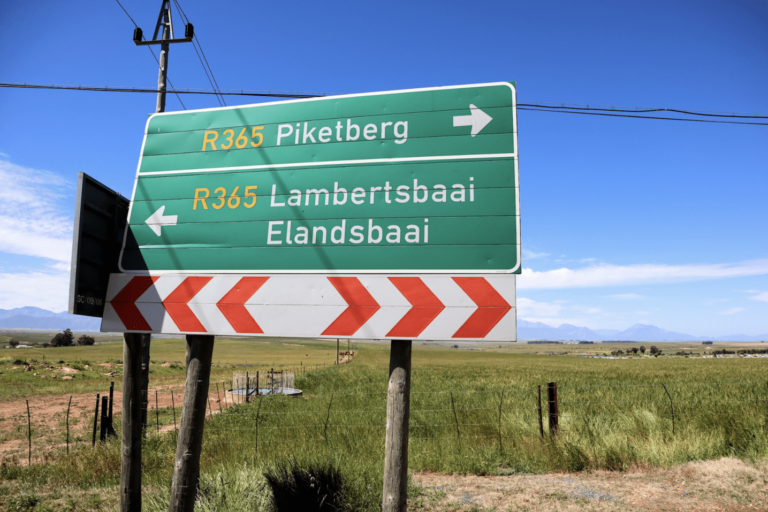
It is here that Piketberg’s historical heart sits. And it is this that we have come to explore, cranking up the N7 from Cape Town. The smaller roads always lead to the best places.
The church was designed by architect Carl Otto Hager and is built of Table Mountain sandstone. Back then, it cost the princely sum of £7 500 – the equivalent of R15 000 today – to construct, replacing the original thatch roof church that was built in 1836.
The pulpit is impressive, carved from wood imported from India, as well as yellowwood and Oregon pine. It is still a working church, with the townsfolk worshipping there every Sunday.
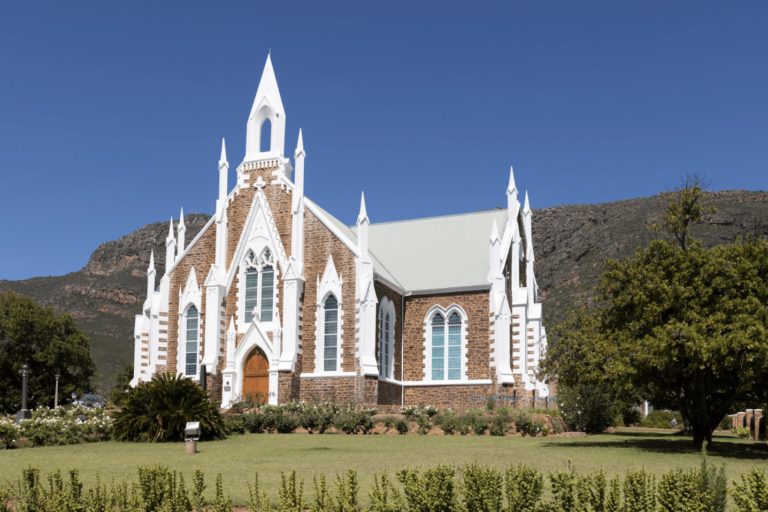
Piketberg itself was founded in 1835.
But the settlers were far from the first people in the region. Piquetberg, the town’s original name, was first given to the mountain stronghold of the CochoQua, a Khoi-Khoi clan, getting its name from picket, a Dutch word for an outpost, as it marked the border between the colony and Khoi-Khoi land.
Even then, the Khoi-Khoi were not the first people in the area. For that, our story has to go back at least 250 000 years to the Middle Stone Age. The museum, housed in the synagogue, has a display of stone tools from our predecessors found around the town.
The historical route
First the church and then a good cup of coffee and a decent slice of cake at Berg Coffee, housed in the historical No 5 Church Street to refuel, before setting off on the rest of the walking tour of the town. Next door is the impressive Victorian era inn, built in 1895 as the Commercial Hotel and now painted a fetching dark brown, broekie lace and all. Sadly it is no longer open but close your eyes and it’s easy to imagine the comings and goings of visitors and guests back in the day.
The wide, clean and quiet streets are perfect for reverie of ox carts and horses, genteel ladies and gentlemen, perhaps a honky-tonk piano, too.
There are 12 stops on the historical route, all within easy walking distance of each other – but be prepared for a bit of uphill legwork.
A stroll down Hoof/Main Street brings you to the police station, built in 1926 in the Cape Dutch style. Today it is the magistrate’s court and is directly opposite the Sheriff’s Office for speedy delivery of messages to the court, where prisoners appeared for all manner of transgressions.
One of the more impressive stops is at the top of the town. The Piquet Hill and Coach House is a private residence, so one must again give over to reverie as you can only stand outside.
Down the hill again, to the Piketberg Museum. Walking through the door is like walking into a time machine, and being transported to the early days of the enclave. Set up as a house, there is a sitting room, dining room and kitchen, complete with butter churn and water tank (only the poshest of people had this indoor plumbing innovation; the rest fetched their water from outside).
Old photographs and back issues of Huisgenoot from 1926, typewriters, spectacles and even a baby’s crib add to the illusion.
And then there is the old graveyard, burial place of many of the town’s solid citizens, its tombstones bearing witness to the passing of time.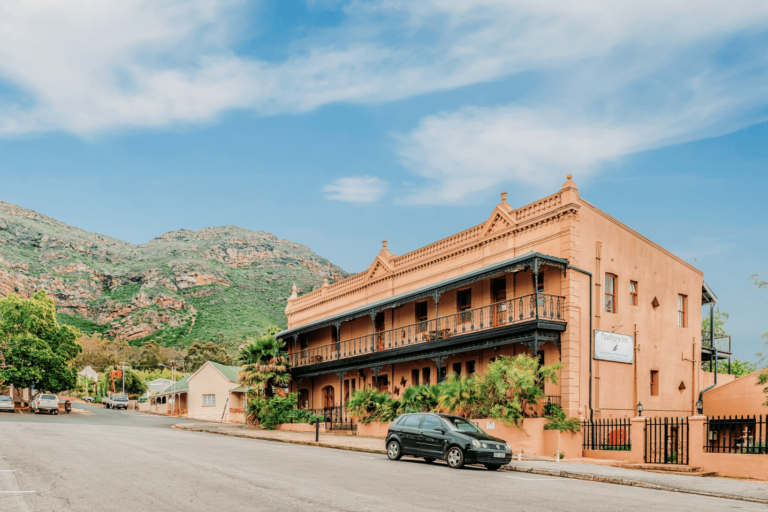
The synagogue
The best place to discover the real history of the area, though, is the synagogue. Once there were 30 Jewish families in the town, refugees from Lithuania, Latvia and Estonia arrived here after the Turkish war in 1877, but all have since migrated to other parts of the world. Back then, they built their new lives here, mostly as smouse (traders) and merchants. The last of the Jewish community left Piketberg in 1945.
The great square building was once painted beige but over the years it has been turned pink by the relentless Piketberg sun. Somehow, it looks right.
Inside is a comprehensive history of the town and the surrounding area, today all about agriculture. The land here is fertile, growing wheat and canola.
A town of two halves
Up the impressive Versveldpas to Piket-Bo-Berg and the landscape changes entirely. It is a different world up there, as the townsfolk will reiterate. Here, the fertile soils and cooler temperatures encourage flower, fruit, nut and rooibos farming, the orchards interspersed with fragrant fynbos. Spring is a good time to visit, when the trees are in glorious bloom. Apples, pears, persimmons, plums, peaches and quince are on the menu.
From here, the views are unsurpassed: Table Mountain rears purple in the distance; St Helena Bay glitters in the sun.
The pass is a belter, narrow and chock-full of tight switchbacks, with views for days. Mountain Passes South Africa tells of farmer John Versfeld who built the original pass in three months with only 16 farm labourers. The tarred road used today was completed in 1943.
If you have a few more hours, there are plenty of beautiful Moravian mission stations in the area. Start with Goedverwacht, just 20km away. The beautiful village is a peaceful place to stop.
Refreshed and relaxed, and armed with plenty of small-town hospitality, the road back to the city is one of quiet contemplation, the traffic not even an irritation.
Stay here
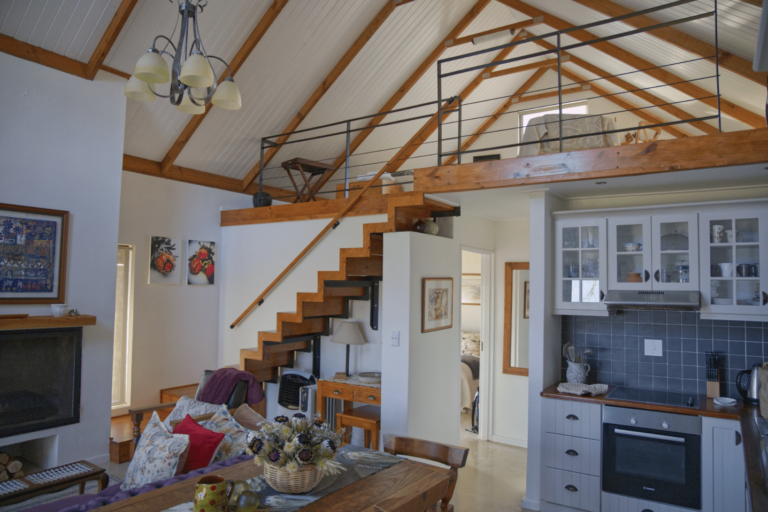
Quince Cottage
On the working flower and almond farm Tamarak, the self-catering Quince Cottage is a warm and welcoming stay. It sleeps four, with a double en suite and a mezzanine with a bed and separate mattress. Owner Anniza de Villiers is a delightful host, showing off the wild flowers around the dam and telling stories of the leopards and Vaal rhebuck, duikers, grysbokkies and klipspringers on the mountain. Look out for the resident pair of jackal buzzards. It can get chilly on the top of the mountain. R950 pn weeknights; R1 250 pn weekends. 022 914 5600, tamarak.co.za/quince-cottage
Cornerstone Guest House
Right at the top of the town, with a splendid view of the church below, the newly built Cornerstone Guest House is a fine B&B, with (a delicious, homecooked) dinner available on request. The beds are big and comfy and although not self-catering, there is a microwave and coffee station in the rooms. Get up early to watch the sun rise over the Winterberg. From R550 pp pn. 084 247 1920, cornerstone-guesthouse.com
Do this
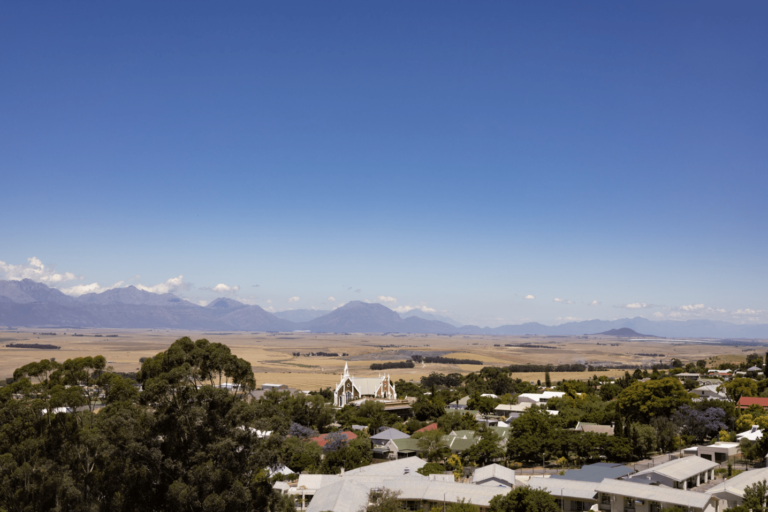
Wine tasting on the organic Org de Rac is a marvellous way to while away an afternoon. Order a picnic or cheese platter in advance, grab a garden seat, and you’re all set. 022 913 2397, orgderac.com
On the last Saturday of the month, visit the farmer’s market on the eco-friendly Kruistementvlei Farm and stock up on fresh, wholesome produce. On sale are breads, fruit and a variety of foods. Facebook: Piket-Bo-Berg Farmers Market
For three weekends a year, the spectacular but private trails on the Mouton’s Valley, Pomona and Bugler’s Post farms are open to the public. The U MTB stage race is two-and-a-half days of challenging riding, and two open weekends have replaced the Piket-Bo-Berg Cycle Challenge & Trail Run. piketbobergtrails.com
Take a dip at The Baths natural hot springs in nearby Citrusdal. There are cold and hot pools, with the waters reaching 43˚C at the source, as well as mountain rock pools. thebaths.co.za
This article originally appeared in the February 2022 print issue of Getaway.
Images: Anton Crone & Richard Brown
Follow us on social media for more travel news, inspiration, and guides. You can also tag us to be featured.
[ad_2]
Source link
Jarastyle – #Piketberg #mountain #retreat
Courtesy : https://www.getaway.co.za/things-to-do/dorps/a-piketberg-mountain-retreat/

